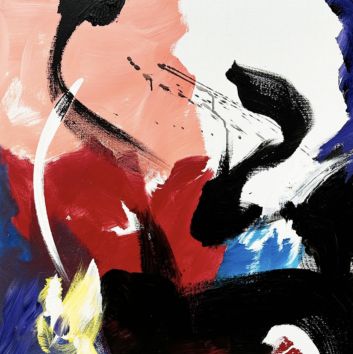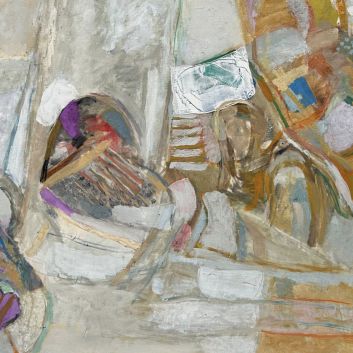Rating and value of paintings by Marcel Mouly

If you own a work by or based on the artist Marcel Mouly and would like to know its value, our state-approved experts and auctioneers can help you.
Our specialists will carry out a free appraisal of your work, and provide you with a precise estimate of its current market value.
Then, if you want to sell your work, we'll point you in the right direction to get the best possible price for it.
Artist's rating and value
Works by Marcel Mouly are quite common on the art market. Associated with the Fauvist group, works from this movement are the most sought-after by 20th-century collectors, especially those depicting nature.
His works, which are not categorized as Fauvist, can fetch tens of thousands of euros at auction. Works by Marcel Mouly sell for between €10 and €47,550 on the art market, a substantial range but one that speaks volumes about the value that can be attributed to these works.
In 2008, his oil on canvas La rue espagnole à Peniscola sold for €47,550 against an estimate of between €31,000 and €47,000, suggesting significant upside potential for his work.
Order of value from the most basic to the most prestigious
Technique used | Results |
|---|---|
Print - multiple | From €10 to €1,400 |
Drawing - watercolor | From €30 to €12,000 |
Paint | From €100 to €47,550 |
Response in less than 24h
Artist's style and technique
Marcel Mouly's works are characterized by synthetic, compact compositions (i.e., the horizon line is drawn at the height of the painting), a sacrifice of detail and a simplification of light.
The link between color and light is established through the flat tint or the fragmented brushstroke, leaving the canvas in reserve. The presence of the reserve in the painting is intended to evoke light and its dazzling effect on the viewer. It is an essential element of the Fauvist group.
Marcel Mouly, a forgotten figure of Fauvism
Marcel Mouly (1918-2008) was a 20th-century Fauvist painter.
Born in Paris, Marcel Mouly produced his first drawings in 1931, inspired by the port of Le Havre. To help his parents, who were of modest means, he dropped out of school at the age of 13 and took on several jobs that enabled him to support his family financially. At the same time, he continued to paint.
From 1935, he attended André Auclair's evening classes on Boulevard du Montparnasse. His progress was interrupted by his military service in the Navy, where he was seriously wounded. Hospitalized, he struggled to recover and worked in a succession of food trades until the outbreak of the Second World War.
In 1942, the Gestapo caught him drawing in a war zone. Suspected of being a spy, he was imprisoned in Fresnes for three months. At the same time, he met Édouard Pignon, a painter from the Nouvelle École de Paris, with whom he worked for some time.
After the armistice in 1945, he finally had the opportunity to exhibit his work, first at the Salon d'Automne and then at the Salon de Mai. His paintings can be found alongside artists such as Jean le Moal, Maurice Estèveand Fernand Léger.
Marcel Mouly is renowned for his hard work, painting every day. He sometimes breaks up the daily routine of his studio with trips all over France, where he makes drawings and sketches to feed his canvases.
From 1950 onwards, his reputation enabled him to organize regular solo exhibitions, mostly in Paris. In 1956 and 1957, he was awarded the Prix de la Critique.
He died in 2008 in Clamart.

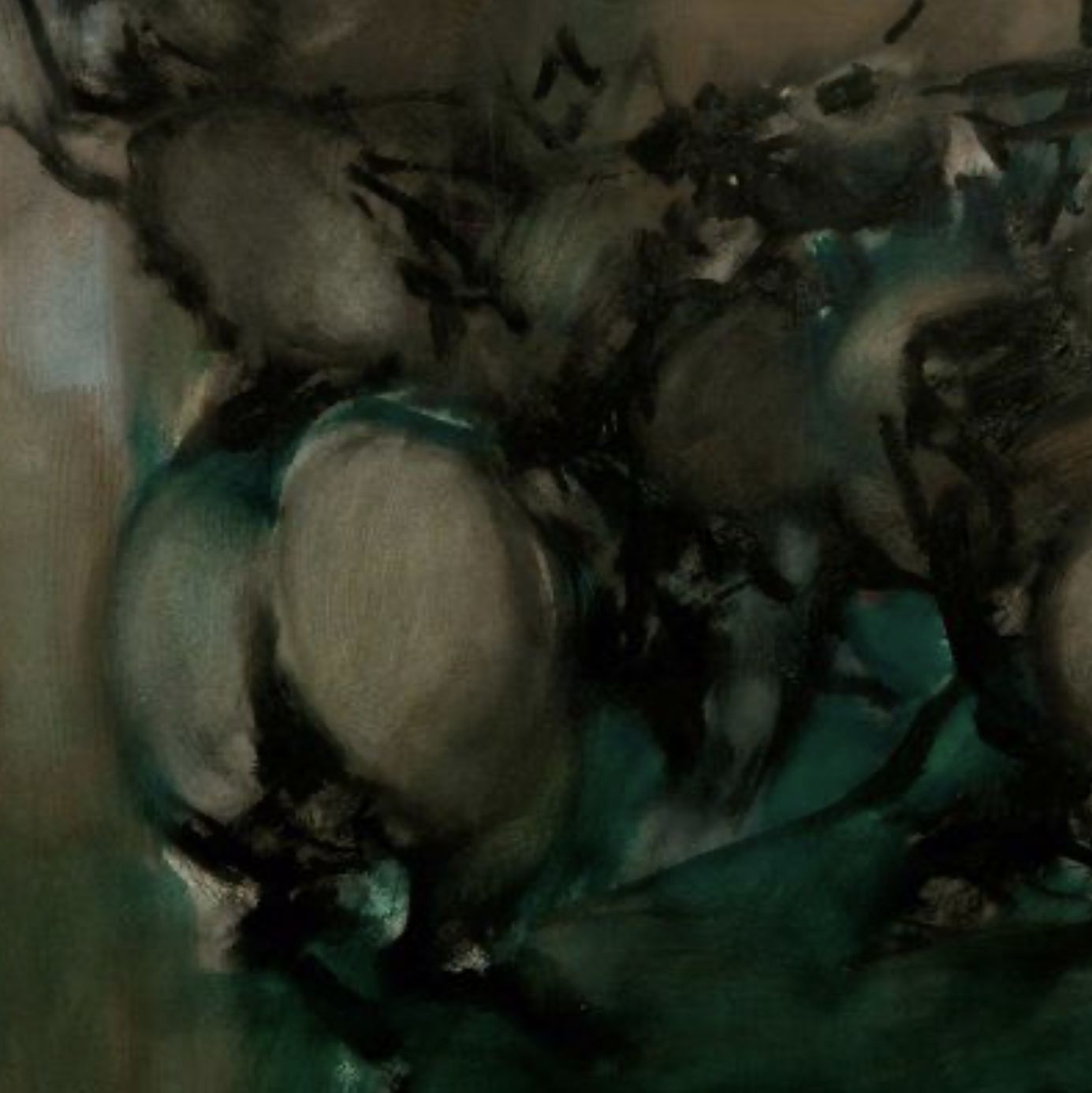
Focus on La vie calme avec la chaise, Marcel Mouly, 1996
In La vie calme avec la chaise, Marcel Mouly, true to his Fauvist style, concentrates on a compact, compact composition, in which lines and colors play a dominant role.
The scene, which at first glance might seem banal - a chair, a few bottles and some fruit - is transformed under his brush into a colorful symphony.
Here, Mouly opts for flat, bold colors such as red, yellow and blue, which do not seek to imitate reality, but rather to exalt the light and intensity of objects.
The simplification of light is striking. Contrary to the pictorial tradition, which seeks to reproduce the subtle interplay of light and shadow, Mouly adopts a more radical approach: shadows disappear almost completely, in favor of a diffuse, homogeneous light, evoked by the bright colors.
The strong contrast between these colors creates a kind of glow, a dazzling effect that comes close to the Fauvist experiments of Matisse and Derain, where pure color becomes a vector of light in its own right.
The compositional lines in this painting are sharp, even angular, a characteristic that recalls the influence of Cubism. The chair, the central element of the composition, is not depicted from a realistic perspective. It seems almost decomposed, its lines blending into those of the bottles and other elements.
Mouly's choice shows his interest in simplifying forms and fragmenting space, a process inherited from Cubist masters such as Picasso.
However, unlike the latter, Mouly retains a certain legibility in his compositions: each object remains identifiable, despite the apparent deconstruction of forms.
The painting also plays with the notion of reserve. The spaces left empty, particularly around the chair and bottles, accentuate the sensation of bright light, as if the objects themselves were bathed in an unreal clarity.
These sparing reserves are skilfully placed to provide the viewer with visual breathing space and reinforce the dynamism of the whole. This process is reminiscent of André Derain's work, where light is not directly represented, but suggested by flat tints and striking contrasts.
In La vie calme avec la chaise, Marcel Mouly demonstrates his mastery of the balance between form and color. The composition, though deliberately simplified, offers a visual richness in which every line and every flat color contributes to the construction of a scene both familiar and transfigured by the expressive use of color.
In this painting, Mouly shows the full force of Fauvism, sublimated by a Cubist influence that structures his vision.
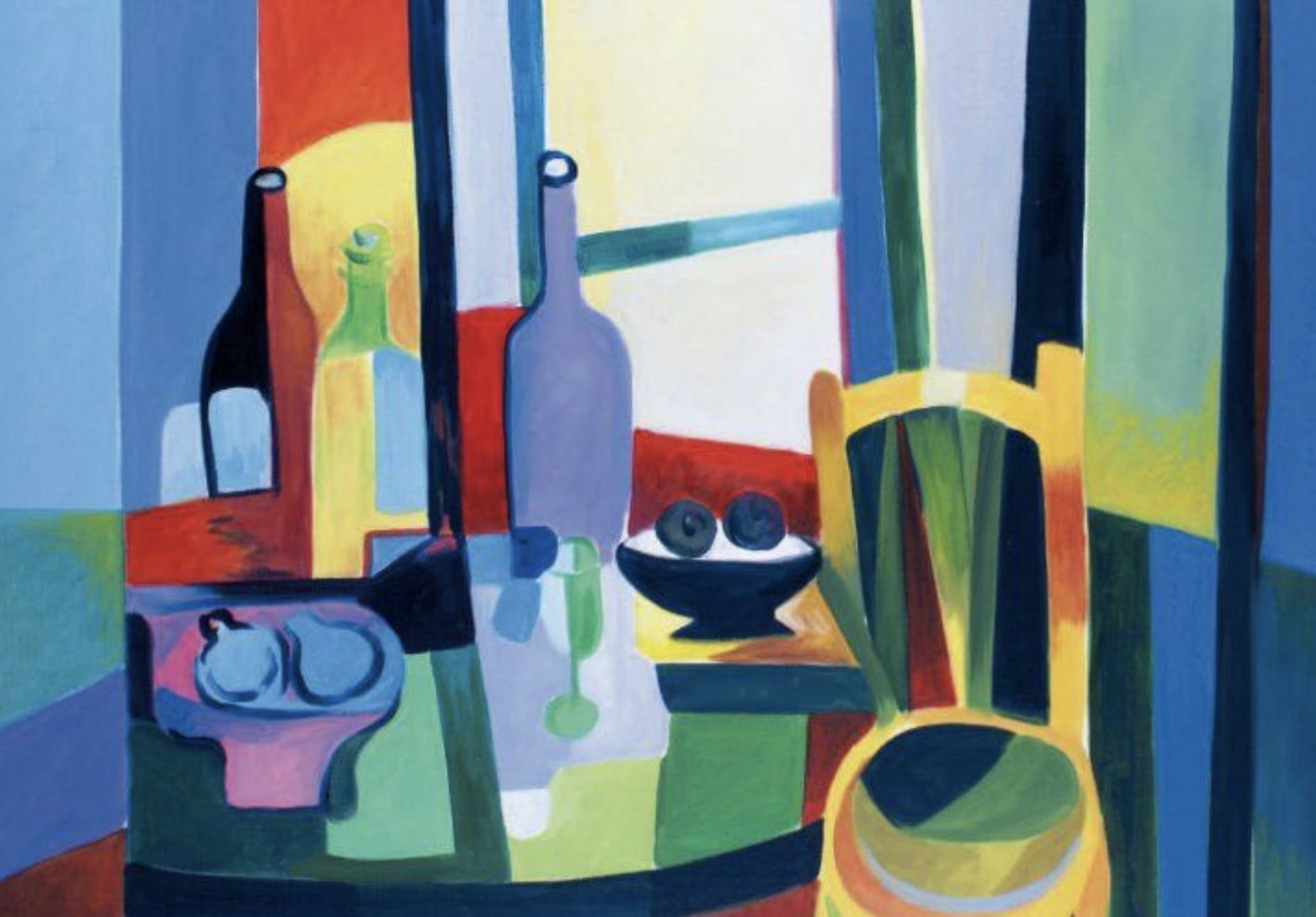
The role of Fauvism in the 20th century
Fauvism, a short-lived but essential artistic movement of the early 20th century, played a decisive role in the evolution of modern art.
By freeing color from its descriptive functions, the Fauve painters, led by figures such as Henri Matisse and André Derain, introduced a new way of conceiving painting, in which color became the pure expression of sensation.
Although short-lived, this movement paved the way for a deeper exploration of artistic subjectivity. Fauvism laid the foundations for many of the artistic revolutions that followed, notably abstraction and cubism, as exemplified by the work of Marcel Mouly.
In La vie calme avec la chaise, Mouly picks up on this Fauvist heritage through his flat tints of vibrant color, while incorporating a Cubist influence marked by the fragmentation of forms.
The major contribution of Fauvism lies in its ability to simplify form to make room for the expressive power of color.
By breaking with academic conventions and seeking out the essence of the object or scene depicted, the Fauves created a new pictorial language, a bridge between the figurative and the abstract.
This language then fed other currents such as expressionism and informal art, confirming Fauvism as a crucial turning point in the history of twentieth-century art, where visual emotion takes precedence over faithful representation of reality.
Marcel Mouly's imprint on his period
Marcel Mouly left a lasting mark on his period, notably with his hybrid works that blended Fauvism and Cubism, providing a perfect introduction to the pictorial and artistic upheavals of the 20th century.
Today, many of his works are exhibited in museums in France and around the world, but private collectors play the greatest role in preserving his work.
A little-known Fauvist today, his work is nevertheless particularly appreciated by modern art collectors. He is also a leading exponent of the twentieth-century art movement. Categorized as a Fauvist, he was nonetheless open to other influences and never remained confined to his own style throughout his career.
The artist's signature
Not all Marcel Mouly's works are signed.
Although there are variations, here is a first example of its signature:
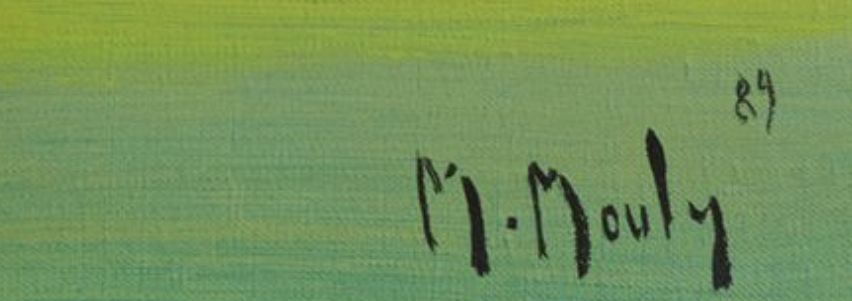
Appraising your property
If you happen to own one of Marcel Mouly's works, don't hesitate to ask for a free estimate using the form on our website.
A member of our team will contact you promptly to provide you with an estimate of the value of your work, as well as any relevant information about it.
If you're thinking of selling your work of art, our specialists will also be on hand to help you find alternative ways of selling it at the best possible price.
Response in less than 24h
Related topics

Value and quotation of works, paintings by Raymond Thibesart
Raymond Thibesart, an artist little known to the general public, has nevertheless produced works with a high rating and value. Estimate in less than 24 hours.
Read more >
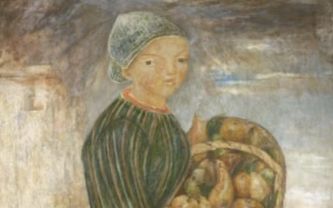
Rating and value 2024 of paintings by Tade...
Tadeusz Makowski is a twentieth-century Polish painter who produced works of considerable value at auction.
Read more >
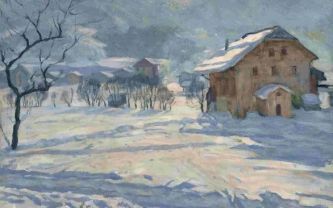
Cote et valeur des tableaux, dessins, peintures de Arnold Bo...
Arnold Lakhovsky est un peintre russe qui a produit de nombreux tableaux dont la cote et la valeur sont élevées aux enchères. Estimation 100% gratuite
Read more >
Secure site, anonymity preserved
State-approved auctioneer and expert
Free, certified estimates
